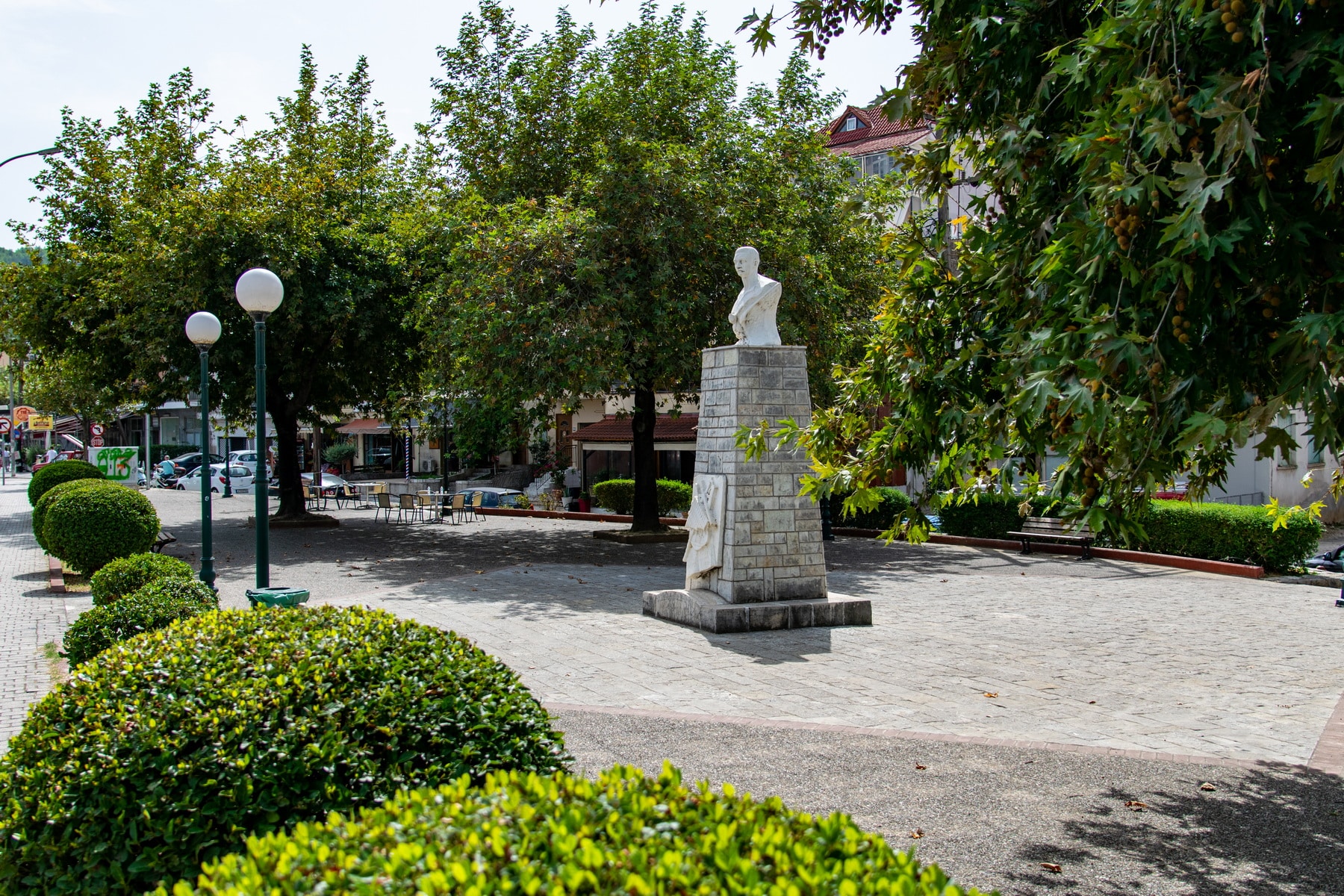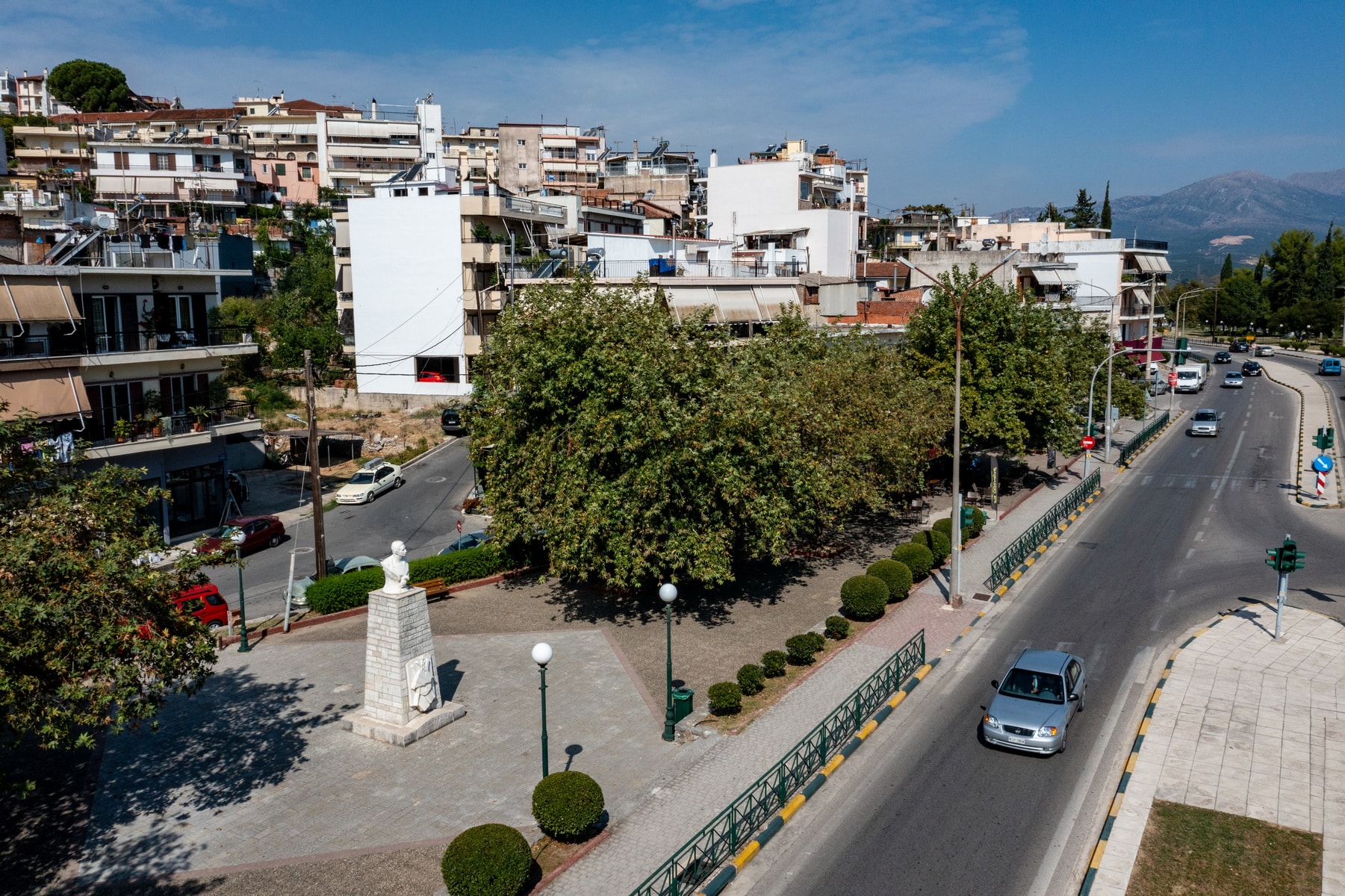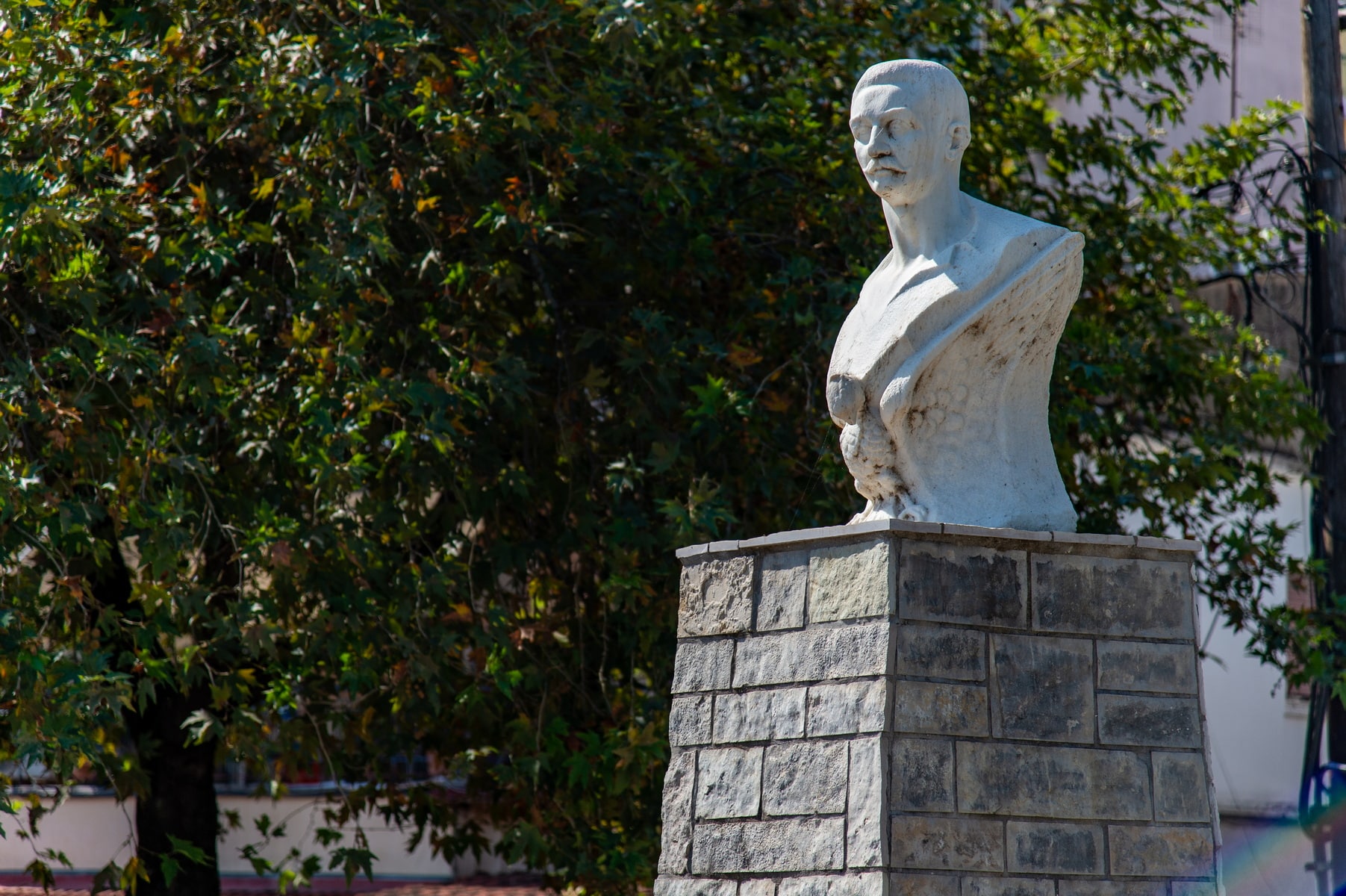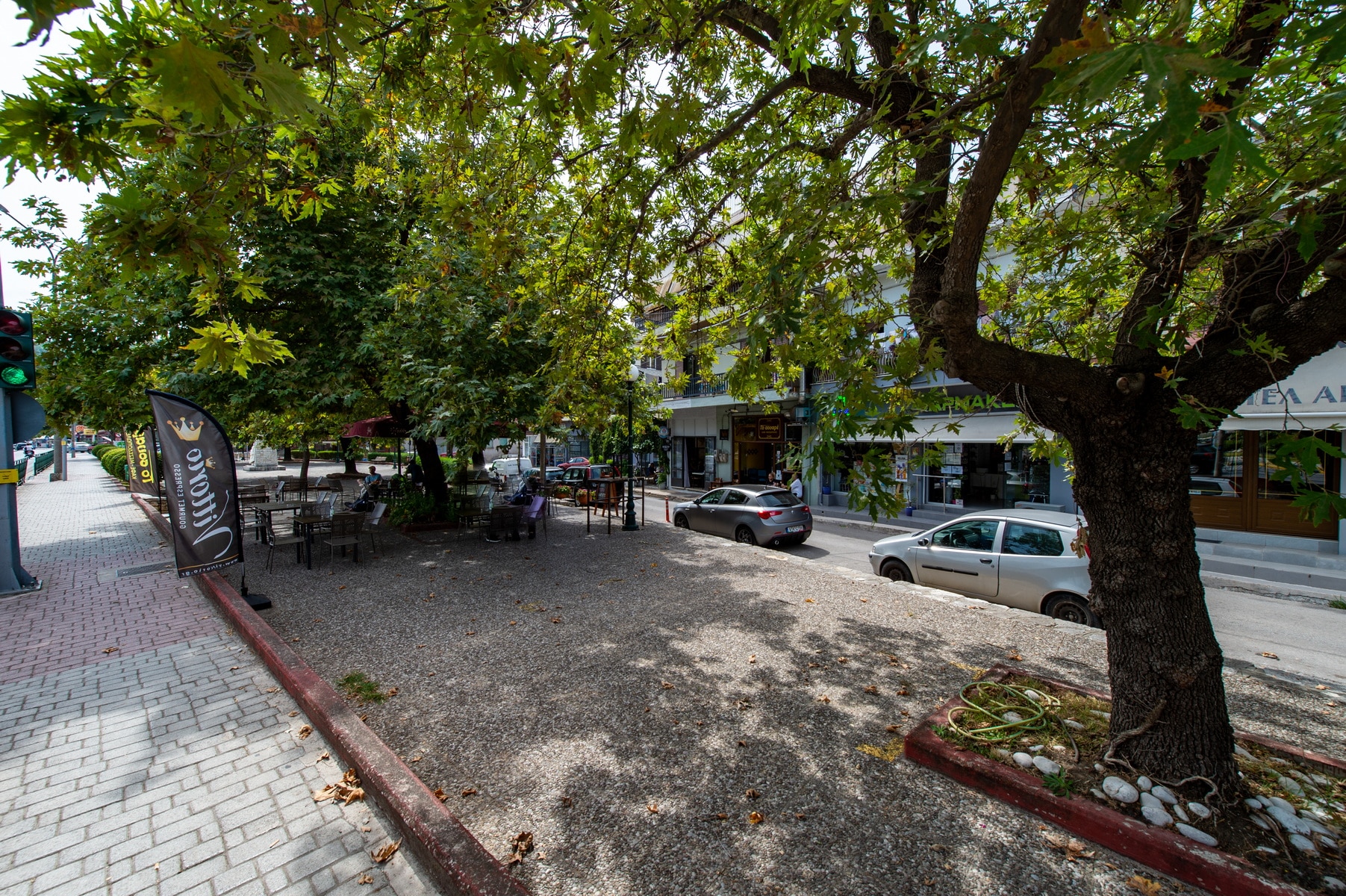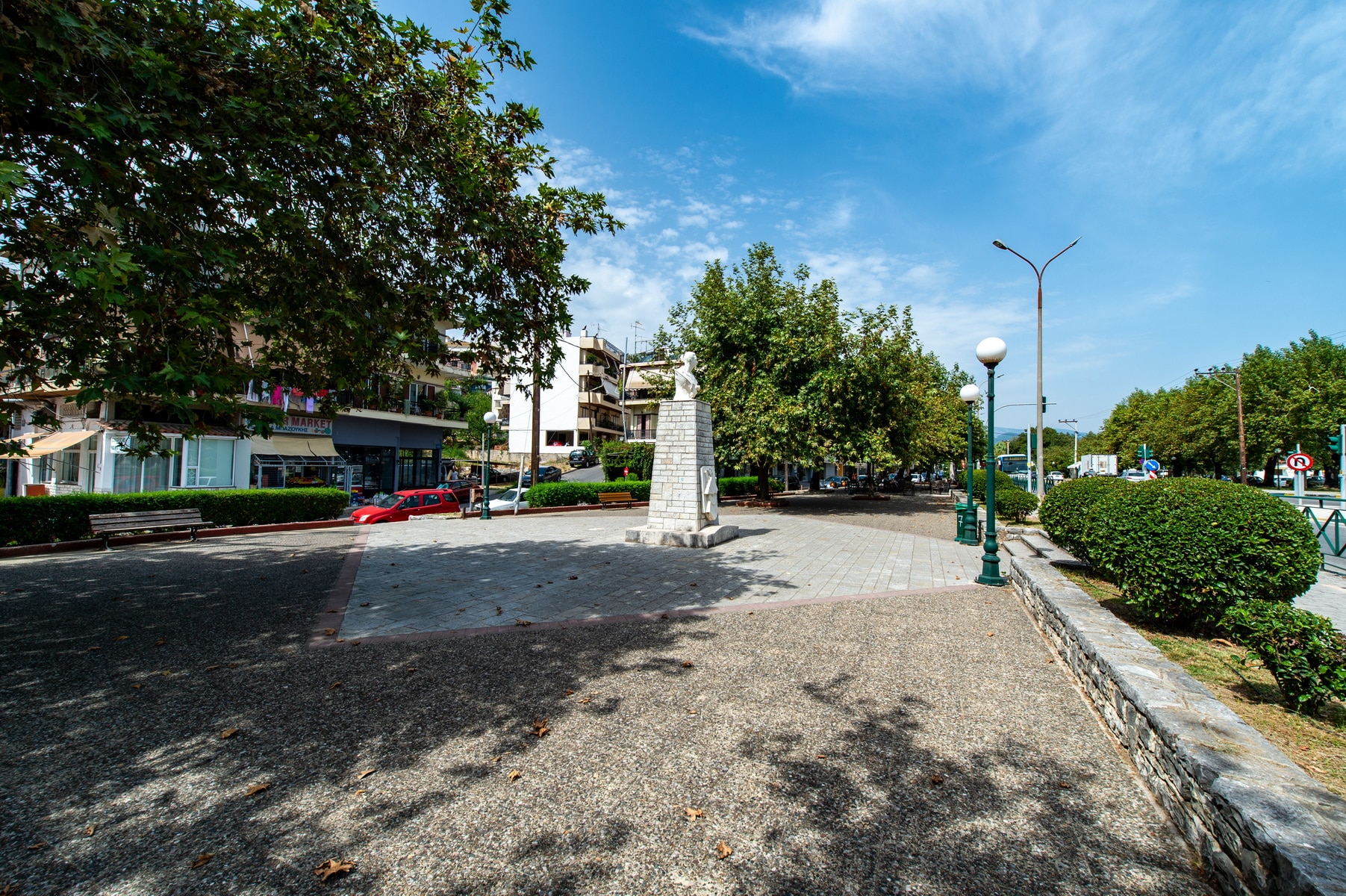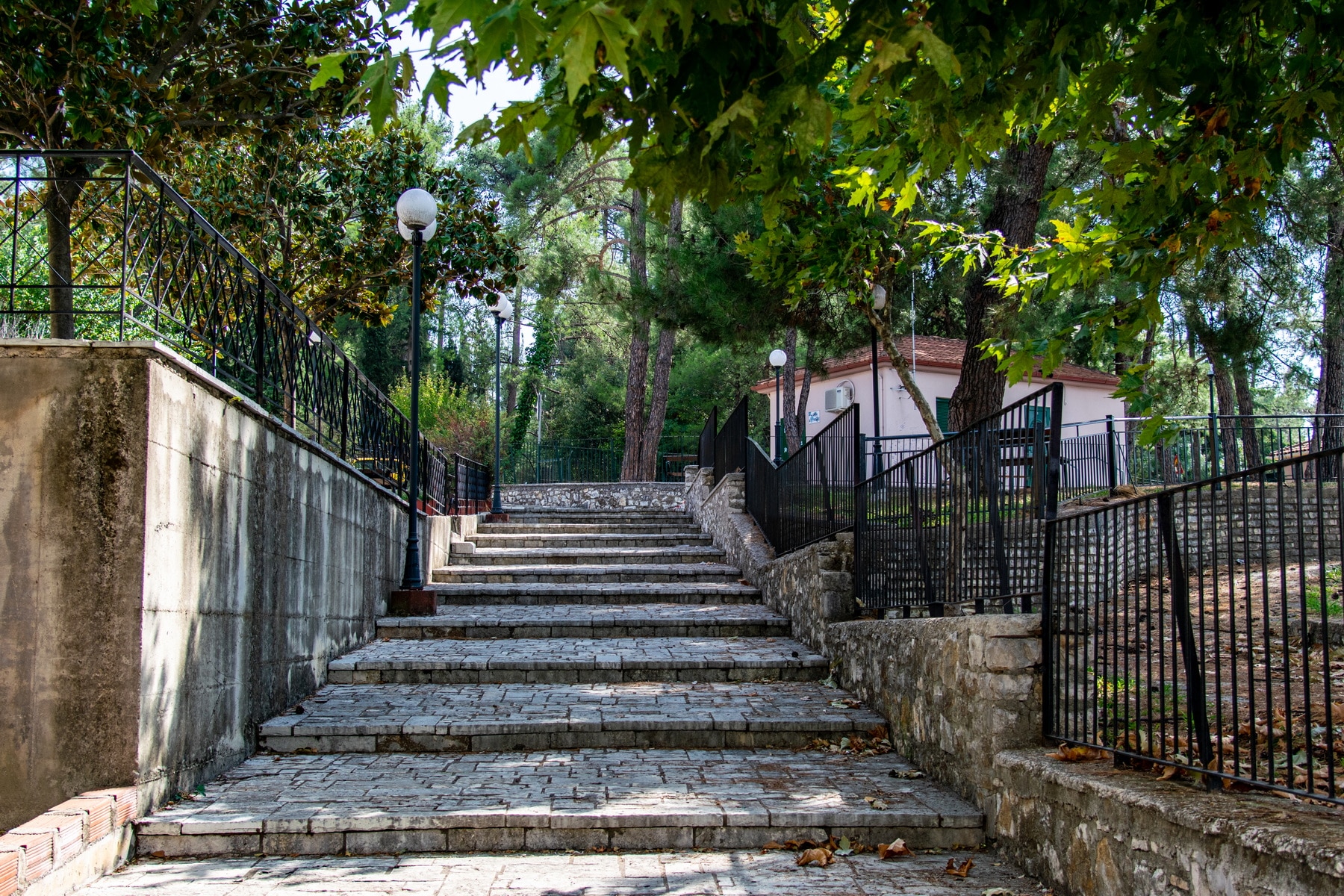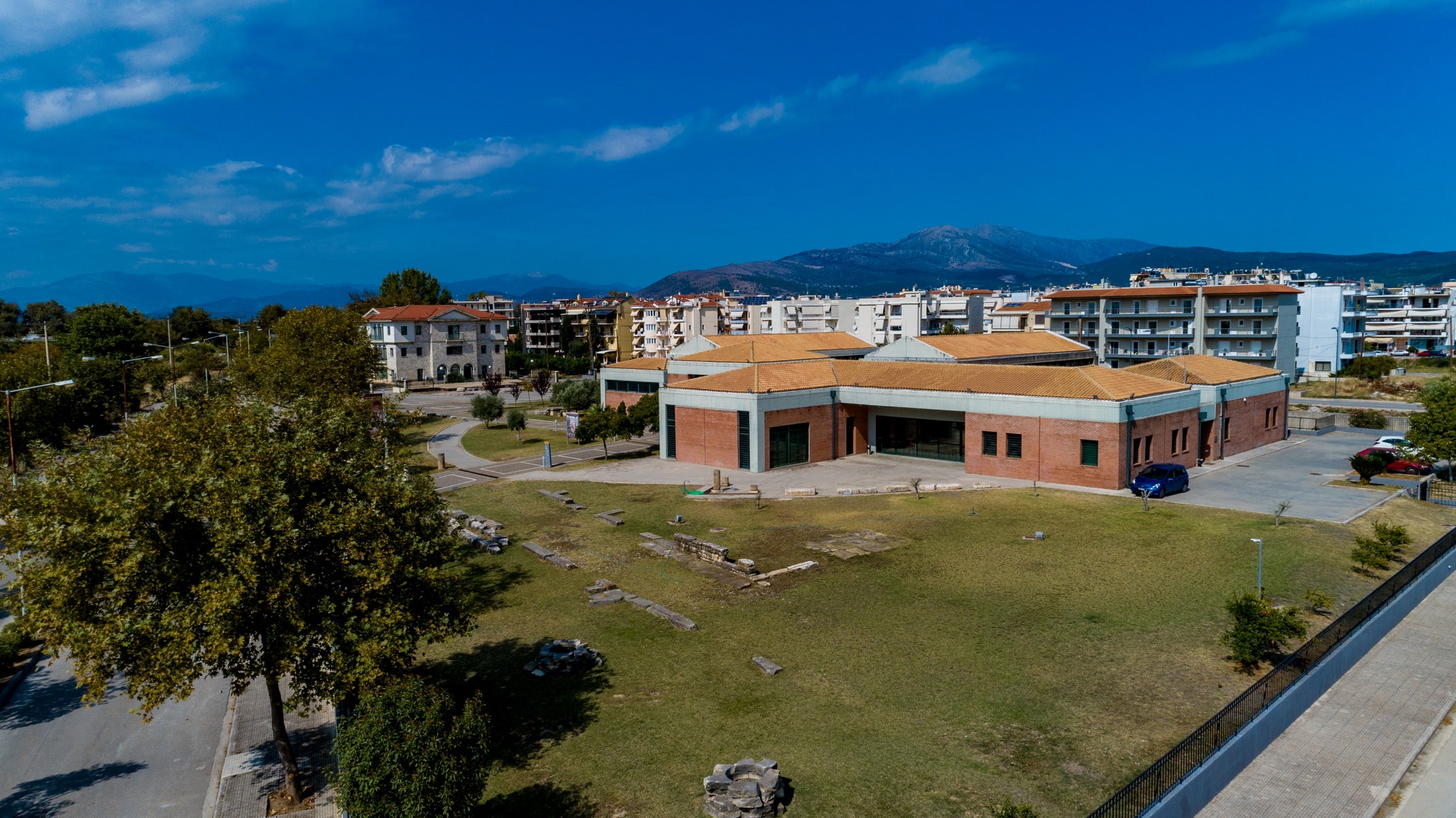The square is located on the peripheral road of Arta, opposite the Intercity, Central bus station (KTEL). It is a narrow tree-planted area defined to the east by the peripheral road and to the west by the curved route of Krystalli Street. It is dedicated to the poet Costas Krystallis, whose bust adorns its center.
The marble bust was created by the sculptor Thomas Thomopoulos. Placed on a built-in base, it is strange at first sight, as the facial features do not reflect the poet’s young age (he died at the age of 26), which probably did not happen by chance since it is generally very inventive in symbolism. The head is slightly turned to the left so that the gaze is directed towards the mountain range of Tzoumerka, indicating the poet’s great love for the mountains. The bust is surrounded by the open wings of an attached, frontal eagle, an apparent reference to the homonymous poem by Krystallis and a clear symbolism of his desire to return free to the high mountains of his homeland. A relief plate is attached low, on the front side of the base with a composition consisting of objects that refer to the poet, a lyre, a crook, a flute, a chanter, and an open book with the inscription: “”the village and the sheep shed’s songs 1894.””
Students from Arta initiated the erection of the monument and raised the necessary money for the realization of the project. In this way, they honored the poet of the Greek mountains at the place of his death and burial.
Initially, the bust was placed near the Agios Theodoros church on the same side of the peripheral road, where it was unveiled in 1930. It was established in its current location later. It seems more appropriate since the house where he left his last breath is behind the square.
Costas Krystallis was born in 1868 in Syrrako, Ioannina. He published his first poem, “”The Shadows of Hell”” (1887) when he was still a student of the Zosimaia School in Ioannina. This was the reason for his persecution by the Turkish authorities, as he referred to the struggle for freedom and the heroes of 1821. To escape the arrest, he fled to Athens, where he began writing his works, poems, and short stories, which are idyllic and inspired by the mountainous nature of Epirus and pastoral life. They exude his nostalgia for the high mountains of his homeland. Struck by tuberculosis, he came to Arta, where his sister lived. A few months later, on April 22, 1894, he passed away at 26. The recognition of his work is stated by the announcement of his death, two days later, in the literary newspaper, “”Asty””:
“”The earth of Epirus, which he so passionately loved, covers from the day before yesterday a poet, a pearl that we will hardly find again in the plot of today’s life, for the loss of whom our emotion and tears are a small tribute of fondness and appreciation.””
He was buried in the Municipal Cemetery of Arta. On April 22, 2018, a memorial prayer was held at his grave, and wreaths were laid at his monument in Krystalli Square to mark the 150th anniversary of his birth.
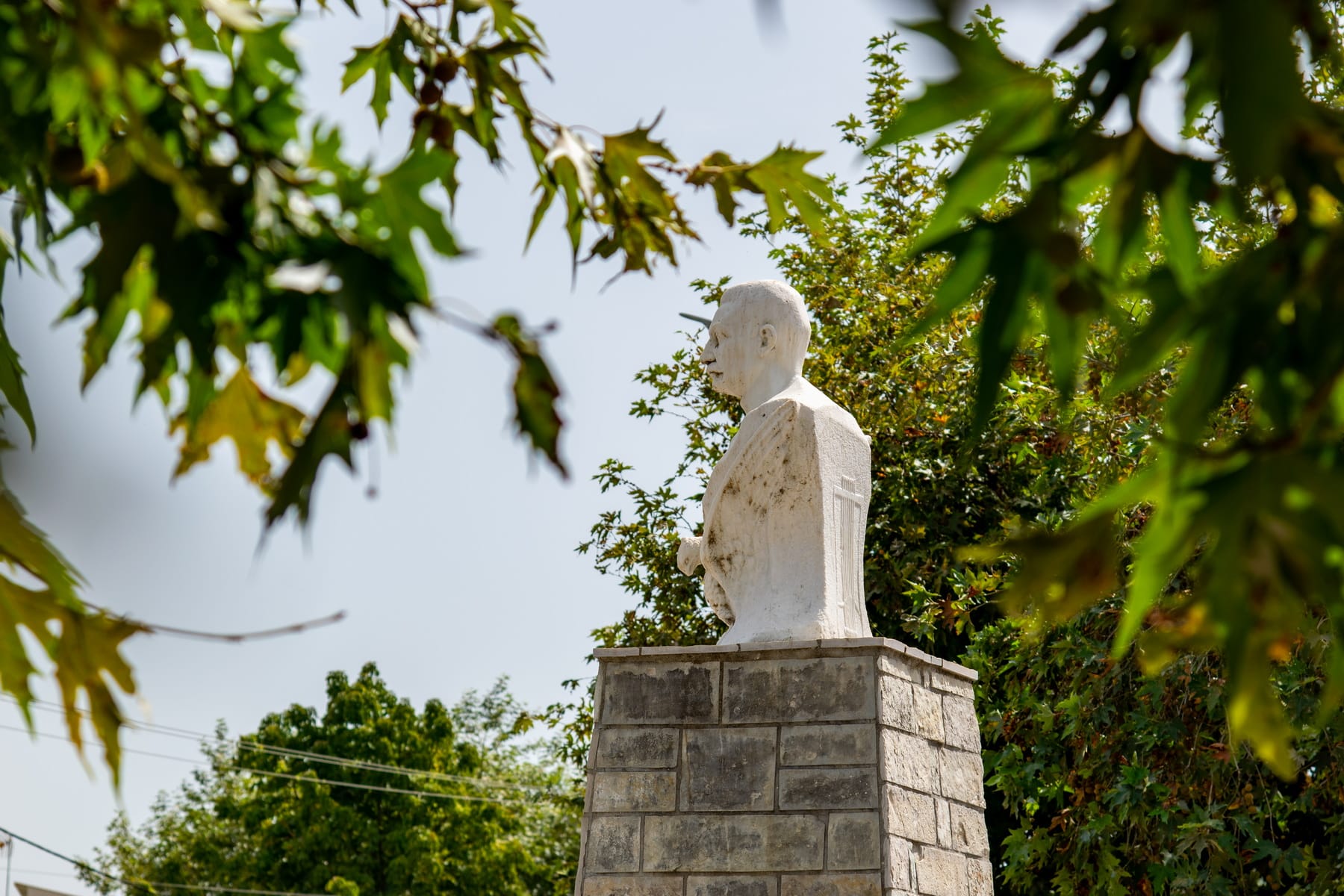
Krystalli Square




